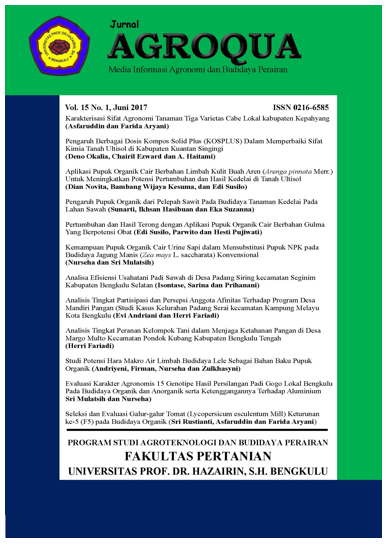INTRODUCTION OF PROSPECTIVE FISH AQUACULTURE COMMODITIES Kryptopterus palembangensis
DOI:
https://doi.org/10.32663/ja.v21i1.3599Keywords:
endemic fish, aquaculture commodities, kryptopterus, reproduction of laisAbstract
Lais fish is one of the endemic fish with a fairly high demand in the market. Famous for its delicious taste, lais fish it be processed in various forms of cuisine such as pindang, pempek and salai (Palembang specialties). The high public interest in this fish provides promising business prospects. However, the fulfillment of the needs of lais fish still comes from natural catches. Sothat if done prolonged, it will cause a decline in the population which if not overcome by lais fish will experience extinction. The purpose of this article is to invite the public to preserve lais fish as endemic fish and make this fish a farming commodity by knowing some basic information about lais fish. The writing method used is a literature study. As for the results obtained, lais fish are related to siamese shark (Pangasius sp.) and catfish (Clarias gariepinus). It has several local names such as jam fish or wedge lais fish, the national name of lais fish and its international name sheat catfishes. The living habitat of lais fish is in fresh water, especially flooded swamp waters. This fish is classified as a carnivore because most of its food is small shrimps and insects. The sexuality of fish can be seen based on morphology, namely differences in body size and head shape. The sex ratio of lais fish in nature is in a less balanced state. Lais fish will spawn at the time of entering the rainy season, with a spawner total spawning pattern. Lais fish has several advantages and is of economic value so that it is worthy of being a candidate for aquaculture commodities
References
Downloads
Published
Issue
Section
License
Authors who publish with this journal agree to the following terms:
- Authors grant the journal right of first publication with the work simultaneously licensed under a Creative Commons Attribution 4.0 Internasional (CC BY 4.0) Licence that allows others to use and share the work with an acknowledgment of the work's authorship and initial publication in this journal.
- The author(s) still hold the copyright of his/her/their work and retain publishing rights without restrictions such as (but not limited to) patent right, lecture, book and reproduce the article for own purposes.
















